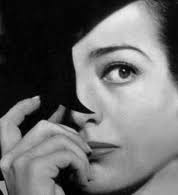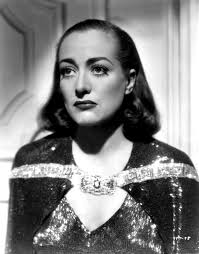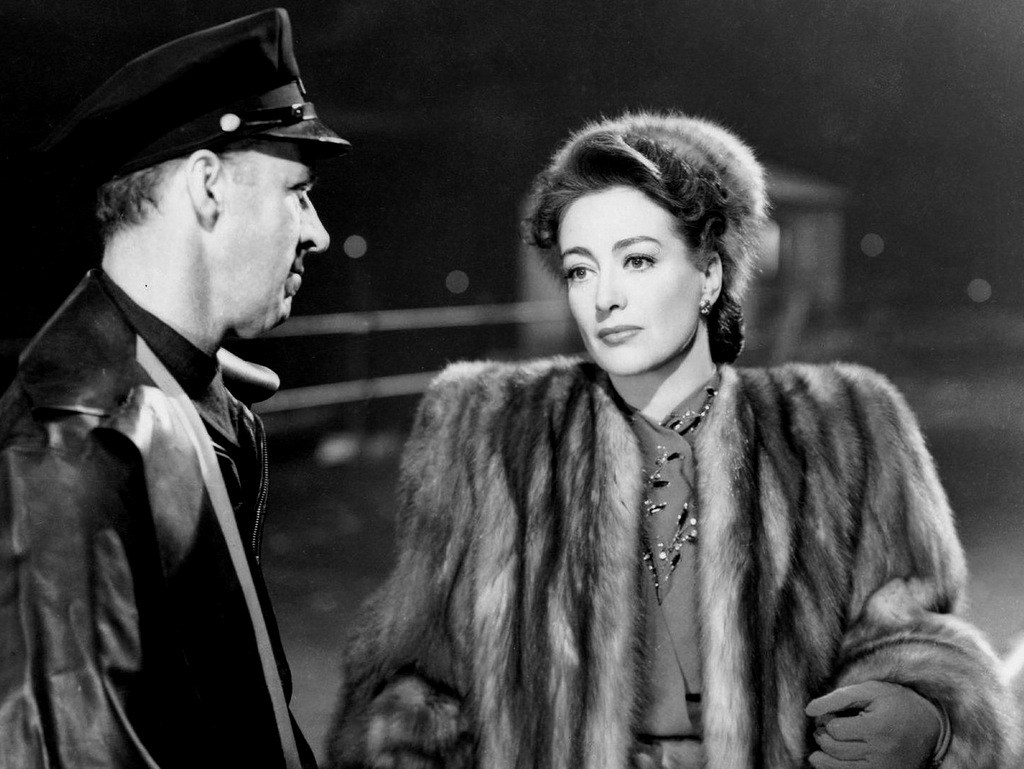
Crawford at Metro-Goldwyn-Mayer (1924 – 1943)
Few could question the fact that movie legend Joan Crawford had a fabulous career, one that far outstripped many of her contemporaries. While Garbo and Shearer faded from view, Crawford moved, with sure foot, onward (and usually upward) gallantly trying on, and often dazzling in, new roles and genres of film.

Any perusal of Miss Crawford’s work at Metro-Goldwyn-Mayer uncovers quite a few excellent films and performances, including Grand Hotel (1932), The Women (1939) Susan and God (1940), Strange Cargo (1940) and A Woman’s Face (1941). In these, Joan expertly navigates from “little stenographer” to shopgirl to flippantly religious society matron, hooker and finally (and deliciously) the conniving home wrecker. But the standout among such star turns is the actresses’ worn-down yet bitter portrayal of thief and con artist Anna Holm whose face has been nearly destroyed by fire. Indeed, Face was Joan’s last “good” film at the “Tiffany of Studios.”

Despite these entries, many Crawford offerings churned out by Metro were shallow, repetitive and often silly. Examples of this fare include: Love on the Run (1936), The Last of Mrs. Cheney (1937), The Bride Wore Red (1937), and Ice Follies of 1939 to say nothing of the real clinkers Crawford was saddled with because the studio was trying to force her out such as Reunion in France (1942), and the all but incomprehensible Above Suspicion (1943). Despite the flimsiness of many Crawford vehicles manufactured in the the early through mid-1930’s, the actress never “phoned in” a performance but often seemed more like an actress “playing” a part than “becoming” a character.
At the risk of being roundly chastised by all of Joan’s religiously faithful fans for such blasphemy, this is not to say that these vehicles aren’t often thoroughly entertaining and that they sometimes gave the star a chance to exercise her acting chops, but Joan’s work at Warners was often more entertaining and dynamic, while allowing the mature leading lady to prove she could be a real actress (as apposed to movie star with a capital “S”) given the right material.
Crawford at Warners (1943 – 1952)
After being unceremoniously dropped by Metro, it took Crawford all of two days (or weeks depending on the source) to ink a new contract at Warner Brothers. While her price dropped at the less prestigious studio, the actress knew that if she made the right script choices she could not only get her career back on track but allow it to thrive. In fact, Joan was so determined that her first starring vehicle at Warners be the right one, she didn’t appear in front of a camera for the next two years, barring a couple of cameos. She even told Jack Warner to take her off salary rather than make a bad picture.

Finally, Joan got her hands on the script for Mildred Pierce (1945). Even Bette Davis turned this one down because she didn’t want to the mother of a teenaged daughter. The noir offering gave Joan a chance to demonstrate abject maternal self-sacrifice complete with tears pooling in those enormous orbs she was so famous for. A sterling performance and some creative self-promotion insured a best actress Oscar for Joan. The win was also a direct result of Joan’s now being a valued (and supported) part of the Warner Brother’s stable of stars.

Crawford went directly from Mildred to Humoresque (1946) in which she played the unstable alcoholic Helen Wright who ends her troubles by walking into the sea. Her riveting performance had all of Hollywood saying Academy Award and Crawford in the same breath for the second time in a year. Joan followed this on-screen triumph with another when she played Louise Howell, a nurse who becomes obsessed by the man she loves, and unhinged when she shoots him dead in a fit of jealousy. Joan gave what is arguably her finest performance in Possessed (1947). She walks the tightrope between madness and sanity, giving a beautifully layered portrayal that garnered the actress another Oscar nomination.

Although Joan wasn’t thrilled about playing carny girl Lane Belamy in Flamingo Road (1949), the role fit her like a glove and while not a masterpiece, Flamingo is an excellent noir that ends with Crawford gunning down the rotund Sydney Greenstreet (and there’s nothing better than that)! The Damned Don’t Cry (1950) rounds out Crawford’s winning streak at Warner Brothers. This vehicle isn’t great cinema either, but it is a really good story that moves at breakneck speed and Crawford is great in it. Damned opens with Joan as a household drudge who leaves her blue-collar husband for life in the big city. Within minutes, Crawford becomes a “dress model,” then a gangsters moll and finally, a society matron funded by the mob. To no one’s surprise, in the final reel, Joan gets shot for her pains. Clawing her way through this blistering melodrama from the first foot of film to the last, Damned is the ultimate Crawford vehicle.

Joan was so good at playing these gritty, down-on-their-luck and troubled characters because they came close to who she really was under the skin. The young Lucille LeSueur was no stranger to hard times and taking desperate measures to survive in the world. Joan Crawford learned to use these experiences to influence her finest performances on screen. And some of the best of these came from the gritty and fast-paced world of Warner Brothers, not the hothouse environment at MGM.
I kinda like her Warner Bros. films more (they are a bit grittier). I also liked her movies for Columbia.
LikeLike
Me too. She just got to play more meaty roles after MGM.
LikeLiked by 1 person
Nice blog post. I noticed that Crawford’s work at Warner’s was more complex than the work she did at MGM. She did a lot of great psychological dramas for Warner’s that I don’t think she would have had access to otherwise if she hadn’t been booted out of MGM. So the change did her career a lot of good, I think.
Tam May
The Dream Book Blog
https://thedreambookblog.wordpress.com
LikeLiked by 1 person
Absolutely!
LikeLike